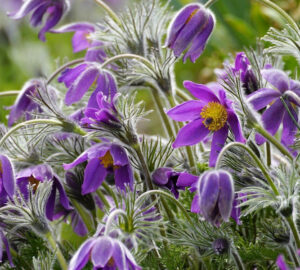As the days grow shorter and the temperatures drop, many flowers begin to fade, leaving bees in search of late-season sustenance. However, there are several perennials that continue to bloom into the fall, providing indispensable food sources for these essential pollinators. In this article, we will explore a selection of these late-blooming beauties and offer tips for gardeners eager to support bee populations.
Late Blooming Perennials: Bee Buffet
Aster
Aster, also known as Michaelmas daisy, boasts a profusion of daisy-like flowers in various colors, including purple, pink and white. These blooms are rich in nectar, making them a favorite among late-season bees.
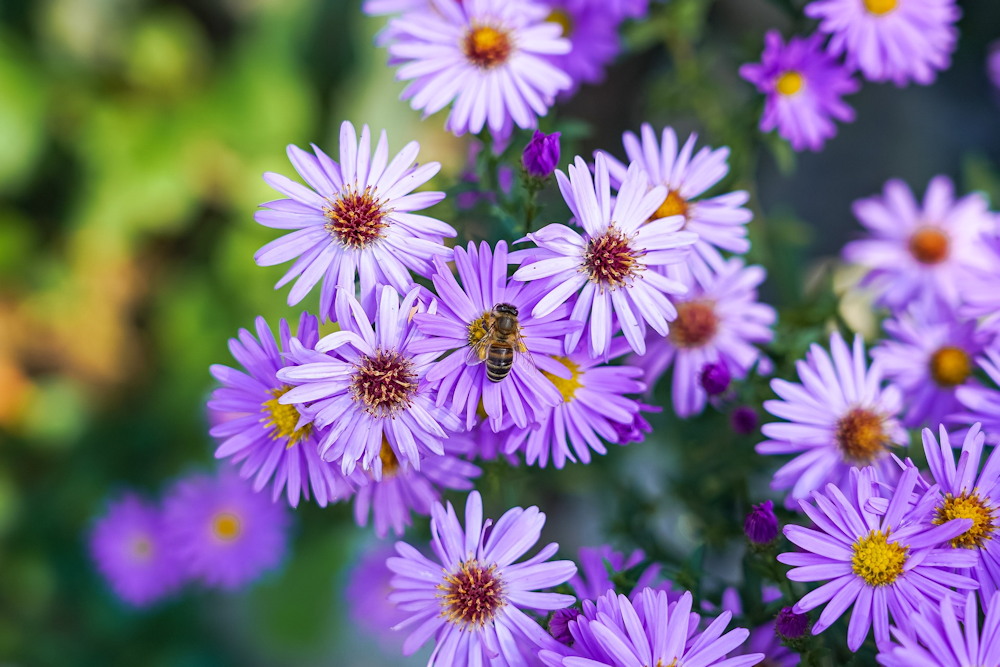
Globe Thistle
The globe thistle, or Echinops, is adorned with unique spherical flower heads that brim with nectar. Bees are drawn to its spiky beauty and find nourishment in its late summer to early fall blooms.
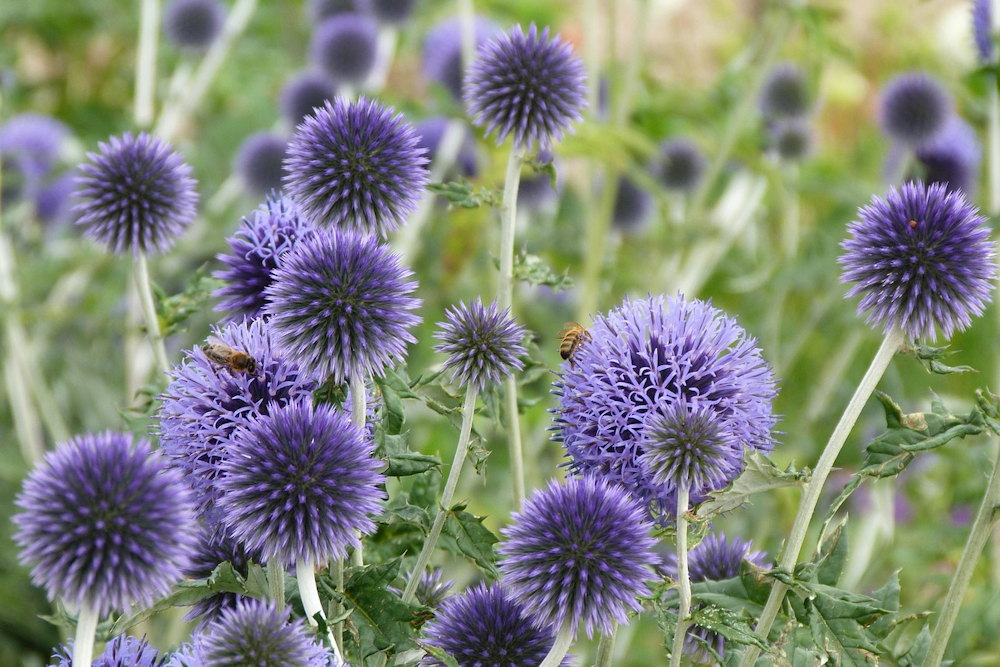
Bluebeard
Also called Bluebeard, Caryopteris produces clusters of vibrant blue flowers from late summer through fall. Bees are particularly fond of its sweet, aromatic nectar.
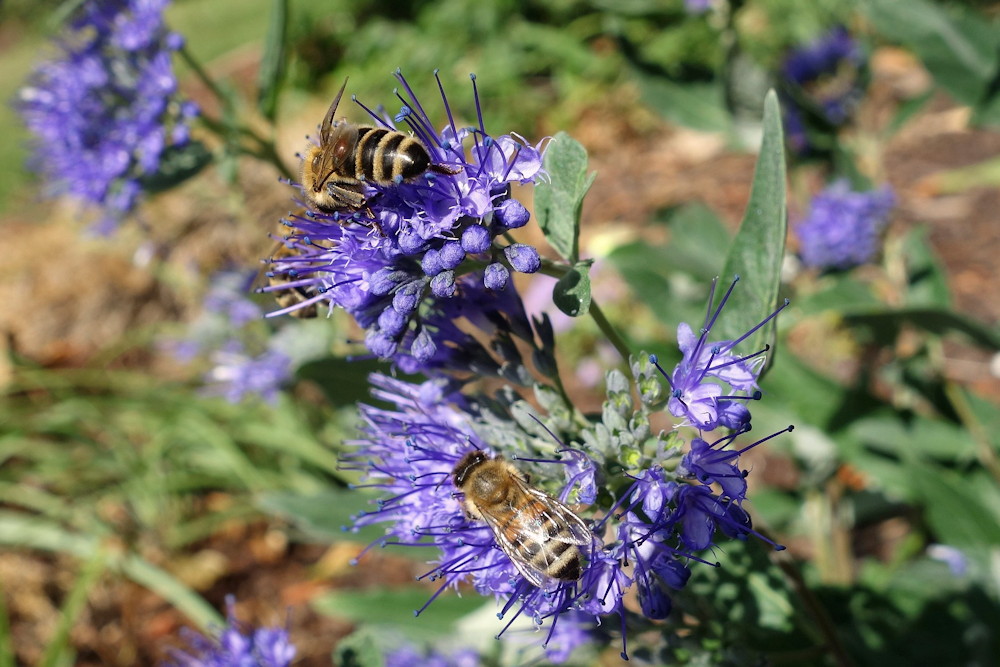
Japanese anemone
Japanese anemone, or Anemone hupehensis, graces the garden with elegant pink or white flowers in the late summer and early fall. Bees relish these delicate blooms, which provide a vital source of sustenance.
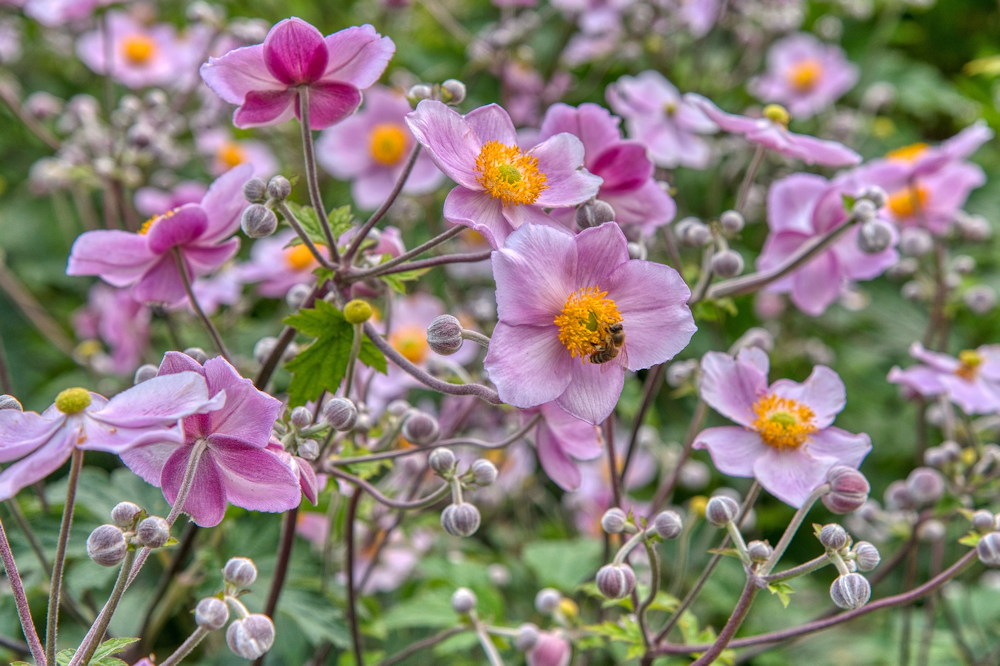
Black-Eyed Susan
Commonly known as black-eyed Susan, Rudbeckia boasts sunny yellow petals with dark central disks. These cheerful blooms continue to attract bees well into the autumn months.
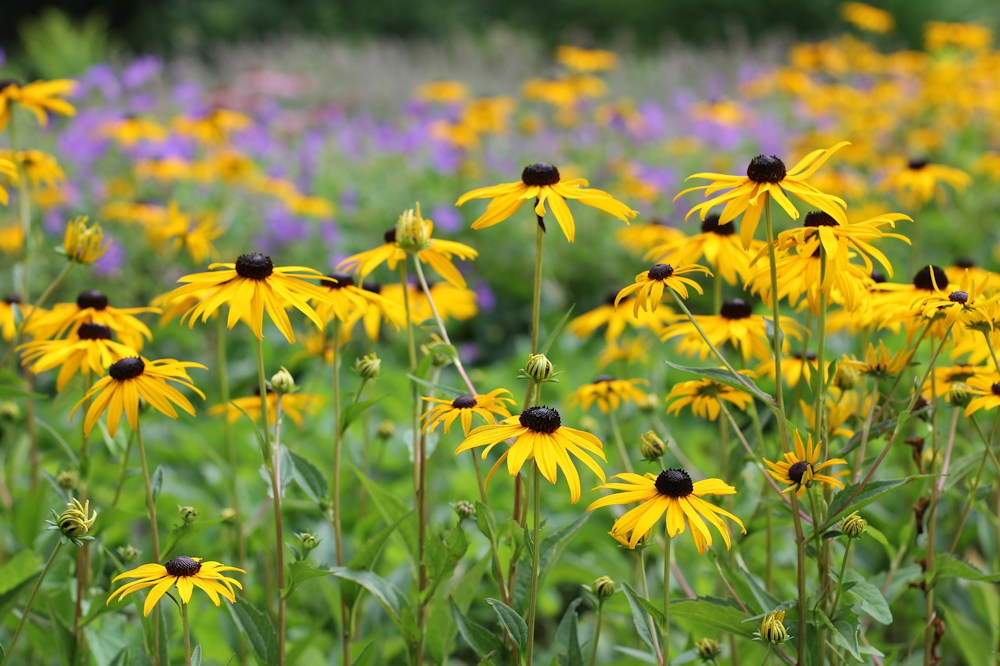
Autumn Crocus
Autumn crocus, or Colchicum autumnale, surprises with its crocus-like blooms in shades of lavender, pink or white. Bees are grateful for this late-season feast of nectar.
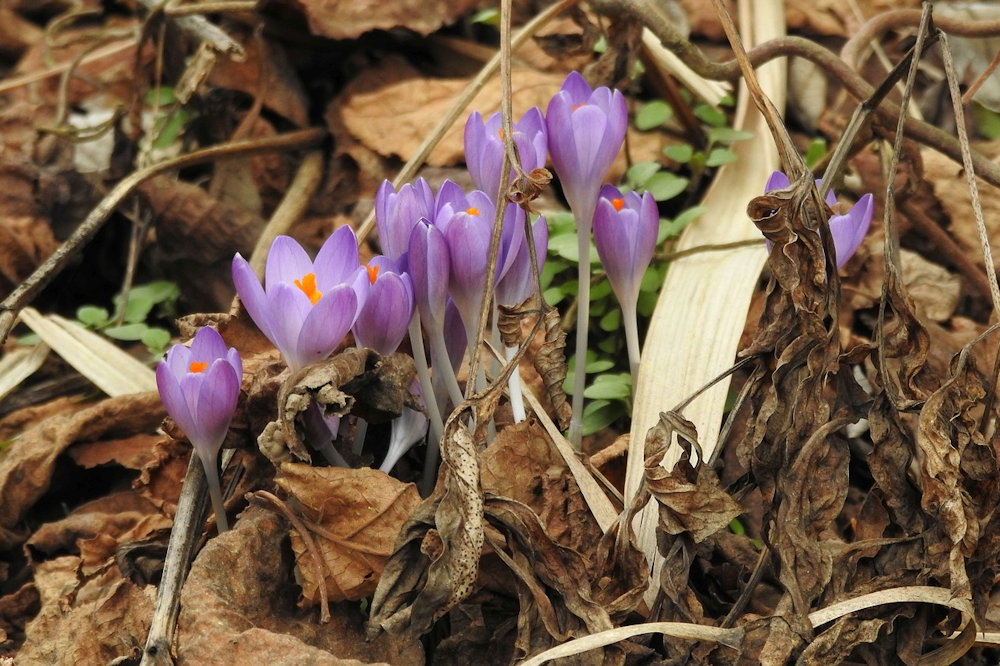
English Ivy
English ivy, or Hedera helix, is known for its trailing vines and small, greenish-yellow flowers in late summer and early fall. Bees appreciate the steady supply of nectar provided by this evergreen.
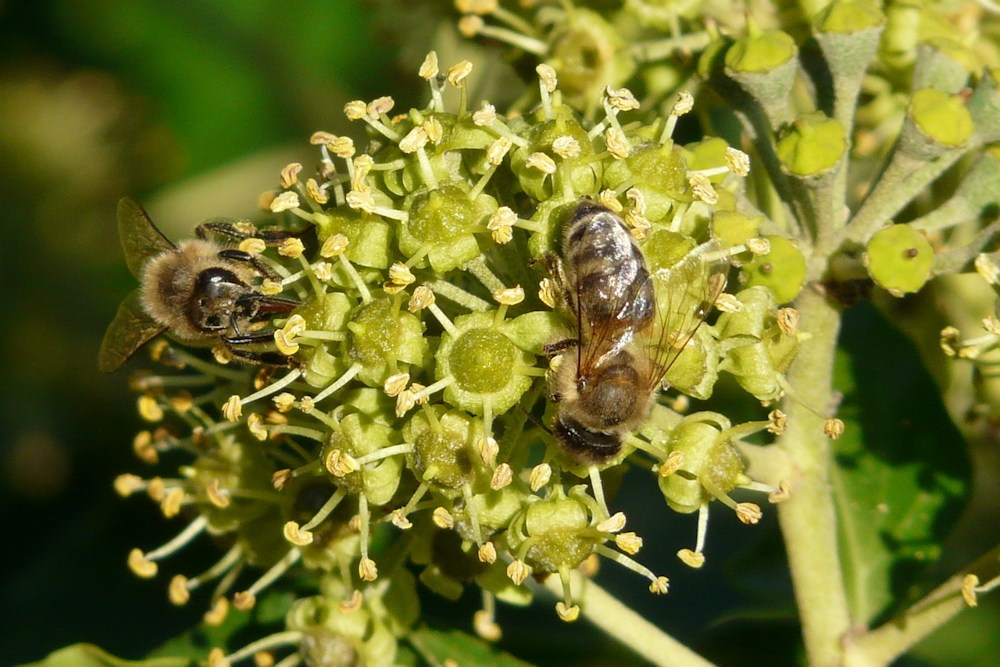
Stonecrops
Sedums, commonly known as stonecrops, produce clusters of star-shaped flowers in shades of pink, red or white in late summer and fall. These low-maintenance perennials are a bee favorite.
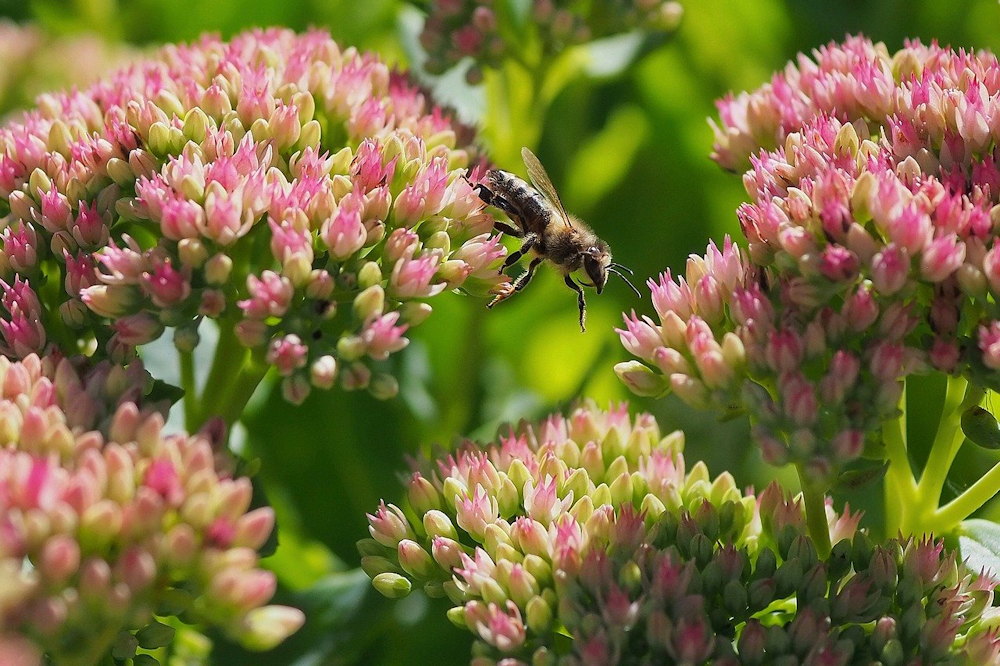
Tips for Supporting Late-Season Bees
- Plant a Variety: Include a diverse selection of late-blooming perennials and woody plants in your garden to provide bees with a continuous supply of nectar and pollen.
- Native Plant Selection: Opt for native late-blooming plants in your garden, as they are often well-suited to the local climate and ecosystem. Native plants provide bees with familiar and abundant nectar sources, making them an excellent choice for supporting late-season pollinators.
- Avoid Pesticides: Refrain from using chemical pesticides in your garden, as they can harm bees and other pollinators. Opt for natural alternatives or eco-friendly pest control methods.
- Water Sources: Set up shallow water sources in your garden, like birdbaths or small ponds, to ensure bees have access to clean drinking water throughout the fall.
- Fall Cleanup: Resist the urge to tidy up your garden too early in the season. Many beneficial insects, including bees, rely on plant debris for overwintering shelter.
Nurturing Late Blooms for a Bee-Friendly Garden
In conclusion, extending your garden’s bloom time into the fall with late-flowering plants not only adds beauty to your landscape but also provides a crucial late-season food source for bees. By planting a variety of these bee-friendly species and following eco-friendly gardening practices, you can help support these essential pollinators as they prepare for winter hibernation, ensuring a healthier ecosystem for all.









